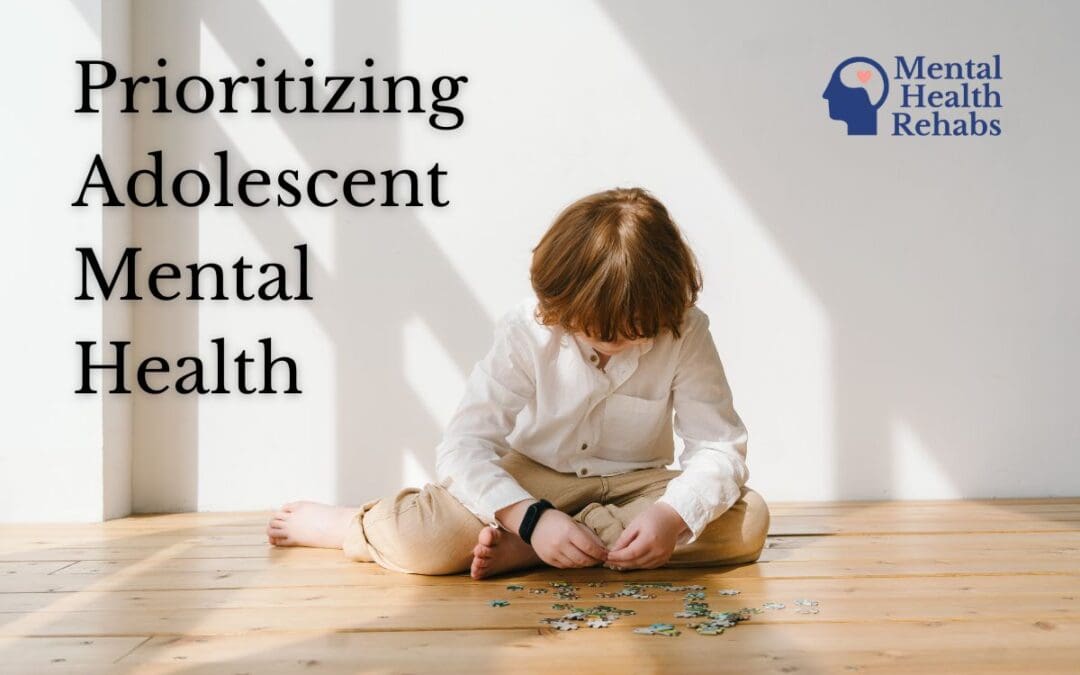A child entering their teens is a critical phase of life marked by rapid physical, emotional, and cognitive changes. As our youth navigate the complexities of this transformative period, the importance of mental health awareness and treatment becomes increasingly evident. In this article, we explore the vital role that mental health awareness and treatment play in shaping the well-being of adolescents, emphasizing the need for a supportive environment that fosters resilience, growth, and a positive future.
Adolescence brings many challenges, including academic pressures, identity exploration, peer relationships, and hormonal changes. These challenges, coupled with the vulnerability of this age group, highlight the necessity of specialized mental health support. Mental health awareness equips adolescents and those around them to recognize, understand, and address their unique challenges.
Preventing Long-term Consequences: Early Intervention Matters
Between the ages of 13-17 is a crucial window of opportunity for early intervention in mental health. Issues such as anxiety, depression, and eating disorders, when identified and addressed during this period, can prevent long-term consequences. Mental health awareness encourages open dialogue, reducing the stigma of seeking help and fostering an environment where adolescents feel comfortable expressing their struggles.
The emphasis on mental health awareness during this age range goes beyond identifying problems; it actively promotes an open dialogue surrounding mental health. Encouraging discussions about mental well-being reduces the stigma associated with seeking help. As a result, adolescents are more likely to feel empowered to share their struggles, fostering a supportive environment where seeking assistance is viewed as a strength rather than a weakness.
The Link Between Academics and Mental Health
The relationship between mental health and academic success is symbiotic. A positive mental well-being enhances cognitive functions, concentration, and creativity, contributing to academic achievements. Mental health awareness in educational institutions is vital to creating an environment that supports not only academic excellence but also the emotional well-being of adolescents.
By integrating mental health awareness into educational curricula, institutions can actively promote a culture of understanding and empathy. Teachers and staff become essential allies in recognizing signs of mental health challenges early on, ensuring timely intervention and support. A school environment that prioritizes mental health enhances academic performance and nurtures students’ overall well-being, laying the groundwork for a future generation that is emotionally resilient and equipped to face life’s challenges.
Benefits of Timely Intervention
Adolescents who develop solid mental health coping skills and resilience are better equipped to face life’s challenges. Mental health awareness programs provide adolescents with tools to navigate stress, build healthy coping mechanisms, and develop the resilience to bounce back from setbacks. These skills are invaluable assets that contribute to long-term emotional well-being.
- Improved academic performance
- Development of coping skills
- Enhanced interpersonal relationships
- Reduced stigma and open dialogue
- Empowerment and self-esteem
- Lower risk of substance abuse
- Preparation for future challenges
Mental health awareness extends beyond individual understanding; it encompasses families, schools, and communities. By fostering an environment where open communication about mental health is encouraged, families and communities become vital support networks for adolescents. This collective effort ensures that no adolescent feels isolated or unable to seek help when needed.
U.S. States Leading the Way For Teen Mental Health Treatment
In a recent nationwide analysis of mental health facilities specializing in the treatment of teens ages 13-17, we figured out which U.S. states have the best access to mental health treatment. The study, based on data from the Substance Abuse and Mental Health Services Administration (SAMHSA), sheds light on the states that are making significant strides in providing crucial mental health support to adolescents.
Wyoming emerges as a leader in adolescent mental health treatment, boasting the highest rate of mental health facilities specifically catering to this age group. With 30 out of 34 statewide mental health facilities offering specialized programs for adolescents, Wyoming sets a remarkable example for other states to follow.
Following closely behind is West Virginia, where an impressive 80.2% of the state’s 109 mental health facilities prioritize adolescent mental health treatment. Wisconsin secures the third spot with 78.9% of its 246 mental health facilities focusing on tailored programs for adolescents, further underlining the commitment these states have towards addressing the unique needs of young individuals.
Idaho and Tennessee also make it to the top five, with 78.33% and 77.73% of their mental health facilities, respectively, providing essential mental health treatment for adolescents. The data reveals a positive trend across these states, showcasing their dedication to building a healthier future generation by addressing mental health concerns among adolescents.
Conversely, Hawaii stands out as a state facing challenges in terms of accessibility for adolescents seeking mental health treatment, with only 31% of its facilities accepting clients aged between 13-17. This calls attention to the need for increased efforts and resources to enhance accessibility and support for young individuals grappling with mental health challenges in Hawaii.
As we navigate the complexities of adolescent mental health, policymakers, communities, and individuals must learn from the successes of states like Wyoming, West Virginia, and Wisconsin while also addressing challenges in states like Hawaii. By prioritizing the mental well-being of our youth and investing in accessible mental health resources, we can collectively contribute to a healthier and more resilient future for the upcoming generation.
Empowering Tomorrow’s Leaders
As we recognize the significance of mental health awareness and treatment for adolescents, it becomes clear that investing in the well-being of our youth is an investment in the future. By providing specialized support, encouraging early intervention, and fostering resilience, we empower adolescents to navigate the challenges of adolescence and emerge as emotionally healthy individuals.
Parents, educators, healthcare professionals, and society collectively are responsible for establishing an environment that prioritizes mental health for the well-being of our adolescents and the generations to come. Together, we can nurture tomorrow’s leaders by fostering a culture that values and supports the mental health of our youth.

